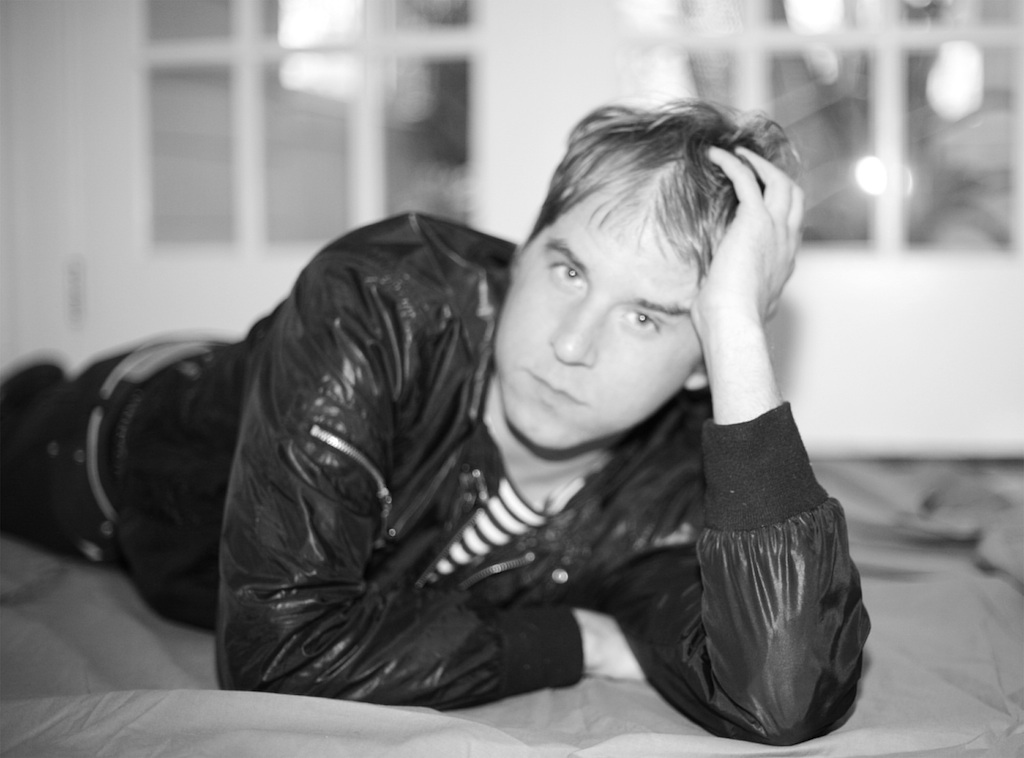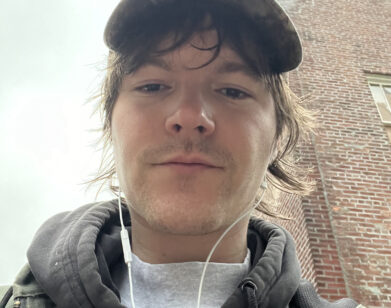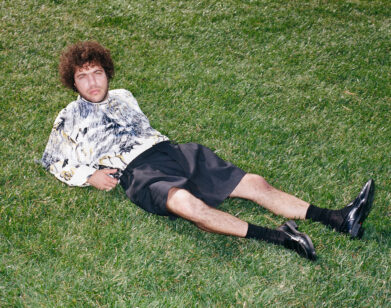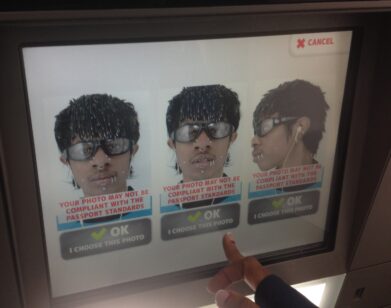Coyote Behavior

ABOVE: CHRISTIAN SIENKIEWICZ
Christian Sienkiewicz, also known as Ice Cold Chrissy, was ready to give up. His music project, Coyote Clean Up, was stuck in neutral. Almost two years after Sienkiewicz had started the project, he released a mixtape, Double Trouble, as a swan song to Coyote Clean Up and perhaps his music career. Two weeks later, he was being reviewed on Pitchfork.
For someone whose fanbase is almost entirely online, Sienkiewicz feels strongly tied to the town he grew up in, Detroit. While his music is at best a distant cousin to the down-and-dirty sound of MC5 or the old time rock and roll of Bob Seger, it has emotional ties to Motown and the famous Detroit techno scene.
2 HOT 2 WAIT, his second release on the LA-based label 100% Silk, is due out April. The album’s debut single, “Awesome Luv,” is a track you might play driving back from a rave, not wanting to wake your sleeping passengers, but also not wanting to lose your buzz.
MICHAEL HAFFORD: How did your double pseudonym come about?
CHRISTIAN SIENKIEWICZ: I had been making music since I was 14 or so in various punk bands and post-punk bands and doing experimental, ambient-type stuff in the late ’90s. I had a band in the early 2000s and focused on my own recordings. The band sort of disbanded and I didn’t really want to start a new band. I was kind of burnt out on the band thing—this was around 2005—so I started DJing in Detroit. My DJ name was Ice Cold Chrissy, and that came out of joke rap songs that me and my friends were doing. My friends always called me Chrissy, so I threw on the “Ice Cold” thing to make it sound jokingly tougher or a little more street. It ended up sticking as my DJ name. I was DJing in Detroit, and I realized that I’m still heavily into music and it’s such a big passion of mine, but I don’t want to make it as a DJ. There are so many better DJs, especially in Detroit. I needed to start writing my own songs again. That’s when I decided I needed to start Coyote Clean Up.
HAFFORD: When was that?
SIENKIEWICZ: That was about 2008 or so. The winter of 2008. At the very end of 2009 I put out the very first mixtape, which was Double Trouble, and that’s when I got the attention that I got. It came out of nowhere. That really was a last-ditch effort for me. Two weeks before that record came out I had literally said to my friend, “I need to stop wasting so much time with music. I’m not going anywhere.” I’m a visual artist, too, so I thought I needed to spend more time on my visual art or get a real job or something, and then my music broke and that was amazing. People picked up on it and it ended up on Pitchfork in a couple of days. It caught me off guard, but that’s not something that you want to take for granted.
HAFFORD: Do you find that your visual art informs your music or vice versa?
SIENKIEWICZ: Definitely. I read a lot of reviews of my music and there’s lots of adjectives thrown in there. Different ideas of color, words like “flickering,” “abstract,” and “skewed.” The bulk of my artwork is all very colorful. Most of it is very abstract art. I take a lot of photographs and do collages and geometric work. In my studio I’ve got all my artwork and art books, too. I try to surround myself in my own colorful world of art and music. It feeds off each other. That’s where the music comes out of—this imaginary place that I try to create around me. I went to art school in Detroit and I lived in this less-than-desirable apartment with just a landline and no Internet—this was in the early 2000s. It was pretty dismal at the time. The only way that I could bring more light and color into my life was to create this fake world around me, which is what I’ve been doing ever since. For so long I was the only one who saw it. This was before the Internet blew up. With the accessibility of the Internet, I started to kind of go down my own wormhole and lose my mind. The minute other people caught onto it, it took on this whole new life. I’m still trying to harness how I can really relate this and show it to other people.
HAFFORD: Can you describe the creative process behind “Awesome Luv,” which is your newest track? What is the first seed and how does that resolve into a full idea?
SIENKIEWICZ: I record digitally, but I work with all kinds of things. You probably couldn’t tell, but there’s acoustic guitar on the whole new album. Usually, I’ll start with a tone or a synth tone. Try to find one note that resonates emotionally with me. Once I lay down that one note, things just start to flow and build on that emotion. Usually it goes straight to some sort of rhythm pattern. Once I have the rhythm going, I can play a couple of notes in the rhythm and just leave it on for hours. I’ll hum along to it or burn it on a CD, put it on in my car and drive around in the city. Sometimes vocals will come up when I’m driving around and listening to it. Sometimes they won’t. Then I’ll bring it back home and add one more thing onto it. The tracks never feel finished for me; I always feel like they could go on longer. I have to cut myself short and some point and say, “Okay, maybe someone will enjoy this much of the song.” It’s never really done for me.
My music has always had this feeling of soundtrack; I can always relate it to life experiences. I work on a song for a long time and I bring it around with me through different life happenings. Give it to a friend on CD and hear it in their car or someplace else. Listen to it at home on a good day; listen to it at home on a bad day. It starts to bring on that feeling of a song in a movie that is constantly played throughout the movie. I find that interesting for me—rather than a rock band coming onto stage and hitting you with their three-minute anthem and then walking off stage. That doesn’t interest me as much, probably because I can’t write a song like “Song 2” by Blur quite yet.
HAFFORD: How would you describe your sound other than as the score to your own life?
SIENKIEWICZ: That’s always a tricky one. What do they say: “It’s like dancing about architecture”? I always hear that phrase. I think people can dance about architecture. I went to art school, and I’ve seen some performance art where people are dancing about architecture, so I won’t rule that out. [laughs] I get a lot of influences from the late-’90s shoegaze-type stuff like My Bloody Valentine. It’s got that emotion—it’s not necessarily bad, it’s not necessarily happy, it’s just really human and sort of dreamy—and I like the idea when something seems spaced out and out of this world, but still very human. I’m big into contradictions with all the objects in my artwork. Then there’s always the Detroit influence, which can be Detroit techno or house influence, which had lots of elements of a really industrial, industrious sound. It’s a workingman techno sound, and yet it’s filled with soul from the Motown era and all the jazz and soul the city has created.
HAFFORD: You’re very identified with Detroit and you feel very strongly connected to it, right?
SIENKIEWICZ: Yeah, I feel really strongly connected to it—all my family is here and all my friends are here—but I’m not no superstar here. We play shows and there’s 10 people here. The techno legends will throw a party and 15 people will show up. Then they’ll go to Europe and they’ll play to 1,500 people. It’s sort of the Detroit thing. You’re doing work, doing your time here, and people recognize it elsewhere. But all of it means something. You’re working hard and that’s what matters. That’s what [Sixto] Rodriguez is doing. I don’t know how he felt doing roofing or doing construction, but it’s all work for him, making music and working at home. You gotta do what you gotta do to survive. That’s sort of the Detroit motto. You don’t get angry about it, you just work harder.
HAFFORD: Do you have any last words?
SIENKIEWICZ: I would tell people to keep it positive in these strange modern times. I’d like to tell people to keep their head up.
2 HOT 2 WAIT COMES OUT TOMORROW, APRIL 30.






